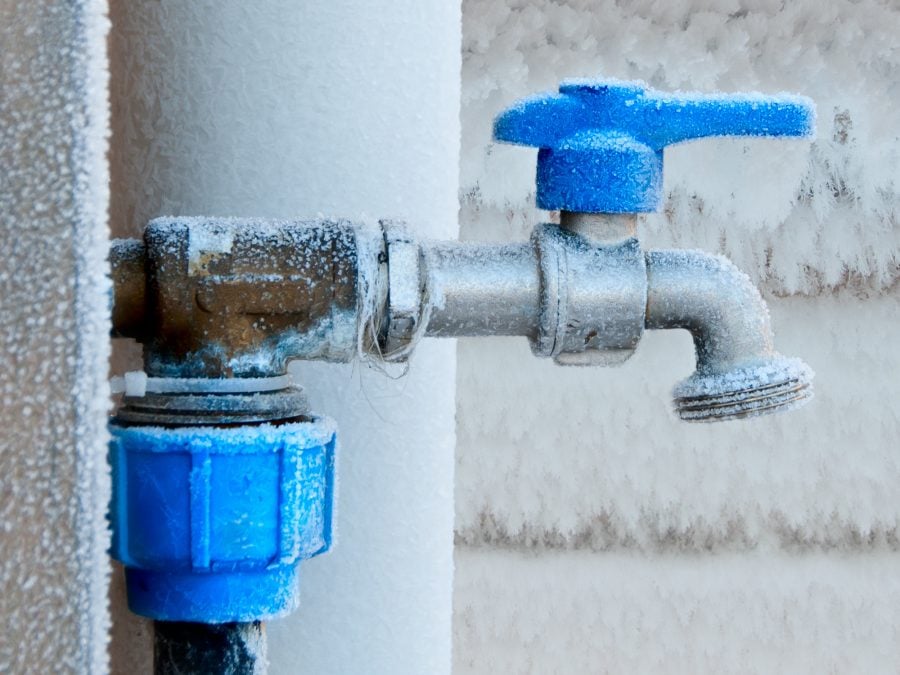We've come across the article relating to Preventing and dealing with frozen pipes below on the web and believe it made perfect sense to write about it with you in this article.

Winter can damage your plumbing, specifically by freezing pipes. Below's how to prevent it from taking place and what to do if it does.
Introduction
As temperature levels decline, the risk of icy pipelines increases, possibly bring about expensive fixings and water damage. Recognizing how to stop frozen pipelines is crucial for house owners in cool environments.
Prevention Tips
Protecting vulnerable pipelines
Wrap pipes in insulation sleeves or use warmth tape to shield them from freezing temperature levels. Focus on pipelines in unheated or outside areas of the home.
Heating strategies
Maintain indoor areas adequately warmed, specifically locations with pipes. Open cabinet doors to allow cozy air to flow around pipelines under sinks.
Exactly how to identify icy pipelines
Search for decreased water circulation from taps, unusual smells or sounds from pipes, and noticeable frost on subjected pipes.
Long-Term Solutions
Architectural modifications
Consider rerouting pipelines away from outside walls or unheated locations. Add added insulation to attics, cellars, and crawl spaces.
Upgrading insulation
Buy top notch insulation for pipes, attics, and wall surfaces. Proper insulation aids maintain constant temperature levels and minimizes the threat of frozen pipes.
Safeguarding Outdoor Pipes
Yard pipes and exterior taps
Separate and drain pipes yard pipes prior to wintertime. Set up frost-proof faucets or cover exterior taps with protected caps.
Comprehending Frozen Pipelines
What creates pipelines to freeze?
Pipes ice up when subjected to temperature levels below 32 ° F (0 ° C) for extended durations. As water inside the pipes ices up, it broadens, putting pressure on the pipeline wall surfaces and possibly creating them to rupture.
Dangers and damages
Icy pipelines can lead to supply of water disturbances, residential or commercial property damage, and pricey fixings. Ruptured pipes can flooding homes and cause considerable structural damage.
Signs of Frozen Piping
Identifying icy pipes early can prevent them from bursting.
What to Do If Your Pipelines Freeze
Immediate actions to take
If you presume frozen pipelines, keep faucets open up to eliminate stress as the ice thaws. Utilize a hairdryer or towels taken in hot water to thaw pipelines slowly.
Conclusion
Stopping frozen pipelines calls for positive actions and quick actions. By understanding the reasons, indicators, and preventive measures, house owners can protect their plumbing throughout winter.
5 Ways to Prevent Frozen Pipes
Drain Outdoor Faucets and Disconnect Hoses
First, close the shut-off valve that controls the flow of water in the pipe to your outdoor faucet. Then, head outside to disconnect and drain your hose and open the outdoor faucet to allow the water to completely drain out of the line. Turn off the faucet when done. Finally, head back to the shut-off valve and drain the remaining water inside the pipe into a bucket or container. Additionally, if you have a home irrigation system, you should consider hiring an expert to clear the system of water each year.
Insulate Pipes
One of the best and most cost-effective methods for preventing frozen water pipes is to wrap your pipes with insulation. This is especially important for areas in your home that aren’t exposed to heat, such as an attic. We suggest using foam sleeves, which can typically be found at your local hardware store.
Keep Heat Running at 65
Your pipes are located inside your walls, and the temperature there is much colder than the rest of the house. To prevent your pipes from freezing, The Insurance Information Institute suggests that you keep your home heated to at least 65 degrees, even when traveling. You may want to invest in smart devices that can keep an eye on the temperature in your home while you’re away.
Leave Water Dripping
Moving water — even a small trickle — can prevent ice from forming inside your pipes. When freezing temps are imminent, start a drip of water from all faucets that serve exposed pipes. Leaving a few faucets running will also help relieve pressure inside the pipes and help prevent a rupture if the water inside freezes.
Open Cupboard Doors
Warm your kitchen and bathroom pipes by opening cupboards and vanities. You should also leave your interior doors ajar to help warm air circulate evenly throughout your home.

As a keen reader about How To Avoid Freezing Pipes, I think sharing that excerpt was really helpful. Do you know another individual who is serious about 6 Ways to Prevent Frozen Pipes? Be sure promote it. Thank you for being here. Kindly come by our site back soon.
Click Here
Comments on “Preventing Frozen Pipes in Cold Weather: Expert Strategies”